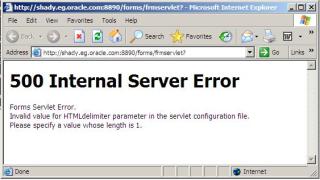Name Different In One Thing Apps , Both Are DBA for the same corporation but before going further you need to know what the definition for both of them what APPS DBA mean and What Oracle DBA mean ?
Oracle DBA ( Database Administrator ) is the person who responsible for administration , Monitor , tuning and recover database ( Failure cases ) For Oracle Database this Person Called Oracle DBA.
Lot of Jobs and Tasks for this Person
- Installing and upgrading the Oracle server and application tools
- Allocating system storage and planning future storage requirements for the database system
- Creating primary database storage structures (tablespaces) after application developers have designed an application
- Creating primary objects (tables, views, indexes) once application developers have designed an application
- Modifying the database structure, as necessary, from information given by application developers
- Enrolling users and maintaining system security
- Ensuring compliance with your Oracle license agreement
- Controlling and monitoring user access to the database
- Monitoring and optimizing the performance of the database
- Planning for backup and recovery of database information
- Maintaining archived data on tape
- Backing up and restoring the database
- Contacting Oracle Corporation for technical support
For More Information Read oracle Documentation
Here.
in he big company that required 24/24hr monitor for more than one database therefore you cannot assign everything to this person he will be killed. So two kind of DBA appeared to reduce Tasks
Development DBA & Production DBA each one of them has it’s own job and Tasks.
Development DBA:
well from the name you can see it’s person who works closely with developers team to make sure database design and performance are working find without any problems.
Production DBA
Person who responsible to ensure that Database for this company is healthy and running without any problem it’s not easy job since this type of Database is the main database for company so you have to ensure it’s working fine or you will be fired.
I mention before of my blog how to become DBA and what you need to do that ? Good understanding of the Oracle database, understanding of the underlying operating system , how Oracle acquires and manages resources, knowledge of both database and system performance tuning,communication skills , management , and ability to handle multiple projects and deadlines all this Hints to become DBA. Read my Post About “how to become DBA”
Here After you have small knowledge about DBA tasks and What he is doing ? Let’s talk about APPS DBA.
Simply the equation :
ORACLE APPS DBA = Application* + Database.
*Which Application is Fusion Middle Ware Products from Oracle.
If you are aware of all the previous tasks then you are able to be Oracle APPS DBA, Oracle APPS DBA include all Oracle DBA tasks and it’s very huge subject to learn and explorer.
So the Task for APPS DBA :
- All Oracle DBA tasks.
- Patching
- Cloning
- Maintenance Oracle Application.
- Installations Oracle EBS.
So as conclusion Oracle APPS DBA is an Oracle DBA because of this he can switch easliy between this job Role, and don’t let this disappointed you also Oracle DBA can switch to APPS DBA but he must read LOT.
Thank you
Osama Mustafa
